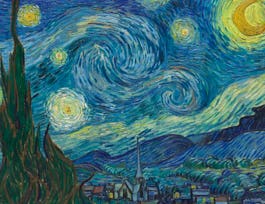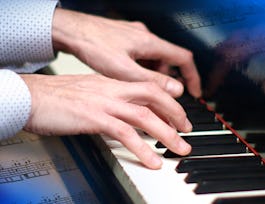This course is a short taster on the topic of the use of Images, Film, and their use in historical interpretation in the 20th century. It is primarily provided for those who have a general interest in history that draws on photojournalism as primary evidence, and films based on historical events.



Film, Images & Historical Interpretation in the 20th Century: The Camera Never Lies


Instructors: Dr Emmett Sullivan
Sponsored by Syrian Youth Assembly
49,205 already enrolled
(375 reviews)
Details to know

Add to your LinkedIn profile
6 assignments
See how employees at top companies are mastering in-demand skills


Earn a career certificate
Add this credential to your LinkedIn profile, resume, or CV
Share it on social media and in your performance review

There are 6 modules in this course
We will explore the issues associated with the use of images as a source for historical research and consider a number of examples where image manipulation has been uncovered
What's included
7 videos8 readings1 assignment1 discussion prompt
We will review a number of cases studies where images have either shaped our opinion of events or have been suppressed from the public at the time, to avoid adverse or negative reaction.
What's included
8 videos6 readings1 assignment2 discussion prompts
The cause célèbre' of historical manipulation - Joseph Stalin. The 'air brushing' of historical records, and in this case the literal airbrushing of Soviet images in the 1930s and 1940s
What's included
10 videos4 readings1 assignment2 discussion prompts
With respect to Reportage and the use of images as a evidential record, should we condemn Stalin in the last 20th and early 21th century? We use an example from 1993 to illustrate this point.
What's included
12 videos11 readings1 assignment1 peer review3 discussion prompts
The photograph of the raising of the flag at Mt. Suribachi was a Pulitzer Prize winning image, and the base of the film 'The Flag of our Fathers'. We will explore the use of the still and the motion picture to influence our opinion.
What's included
11 videos8 readings1 assignment2 discussion prompts
What is 'Public History'? How do photographs and films with an historical theme shape our awareness of historical events and our memories?
What's included
8 videos2 readings1 assignment1 peer review
Instructors


Why people choose Coursera for their career




Learner reviews
375 reviews
- 5 stars
69.33%
- 4 stars
24.26%
- 3 stars
3.73%
- 2 stars
0.53%
- 1 star
2.13%
Showing 3 of 375
Reviewed on Jul 4, 2024
Overall a very stimulating course with plenty of reading material. However I felt too much time was spent on the Pacific photo and too little time on the Hitler and Stalin eras.
Reviewed on Oct 18, 2020
My only concern is that some reading materials are not accessible, but other than that, everything is great.
Reviewed on Jul 11, 2021
Interesting, beautiful, and some time overwhelming... makes you think in the power of the images, in the history as the human memory
Recommended if you're interested in Arts and Humanities

The Museum of Modern Art

University of Rochester

Universidad de los Andes

Open new doors with Coursera Plus
Unlimited access to 10,000+ world-class courses, hands-on projects, and job-ready certificate programs - all included in your subscription
Advance your career with an online degree
Earn a degree from world-class universities - 100% online
Join over 3,400 global companies that choose Coursera for Business
Upskill your employees to excel in the digital economy





